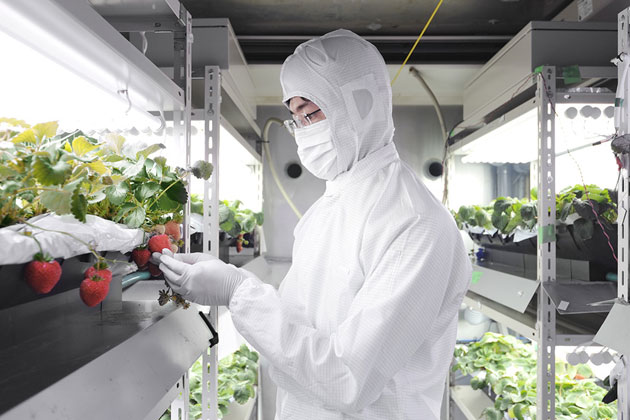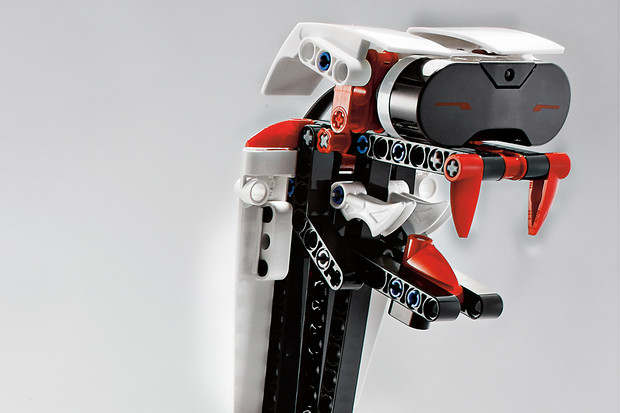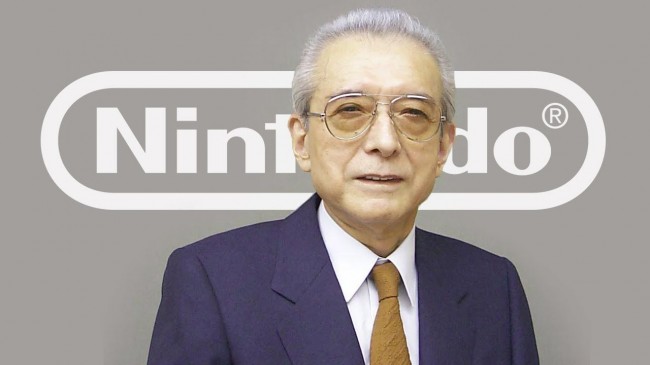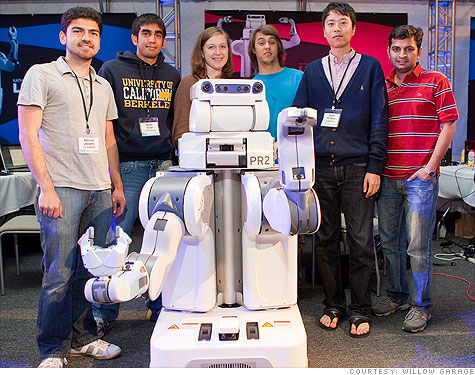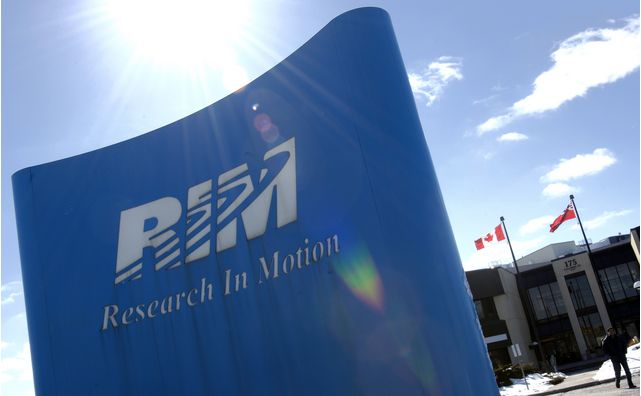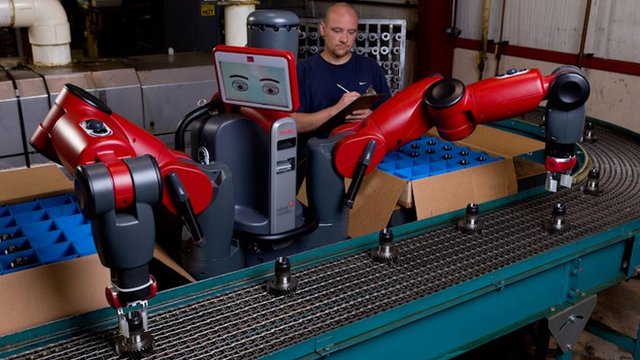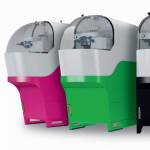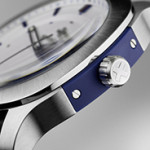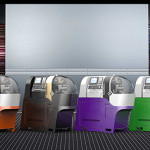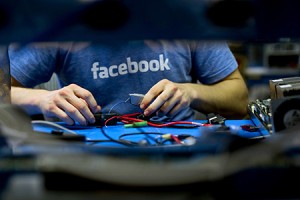 Hidden away in Building 17 of Facebook Inc.’s headquarters is a 170-person team that’s toiling away on products not usually associated with a social-networking company: hardware.
Hidden away in Building 17 of Facebook Inc.’s headquarters is a 170-person team that’s toiling away on products not usually associated with a social-networking company: hardware.
Up from just seven people in 2010, the team designs, manufactures and supplies the powerful server computers that handle Internet traffic for the Menlo Park, California-based company. The group has produced hundreds of thousands of the machines, with Facebook last year spending $1.36 billion on its own data centers, compared with $606 million in 2011.
Now the question is whether Facebook can make the leap from servers into consumer hardware when it completes a $2 billion deal for Oculus VR Inc., which produces headsets that let people immerse themselves in virtual games. Consumer electronics is a competitive arena marked by narrow margins, and Facebook would be stepping into a wearables industry where Google Inc. and Samsung Electronics Co. are playing. It also involves navigating regulatory restrictions in different countries for what materials can be used and how a product can be disposed of, said Pamela Gordon, president of design consulting firm Technology Forecasters in Oakland, California.
“This is something that Microsoft, Sony, Dell, all of the consumer-electronics companies have had to deal with,” she said. “There’s a huge amount of oversight involved.”
Oculus Optimism
Oculus executives said they are optimistic that Facebook’s experience with servers will benefit them — and that it helped lure them to sell to the social network in the first place.
“Facebook is going to help on the manufacturing side, on the component side, on the supply chain,” said Nate Mitchell, vice president of product at Oculus in Irvine, California. “They don’t have a lot of consumer hardware experience, but they do have experience manufacturing.”
Facebook’s hardware operations echo those of other Internet companies such as Google and Amazon.com Inc., which also have built their own data centers from scratch, often by becoming assemblers of server computers. That has brought the Web companies clout with component suppliers and given them some characteristics akin to hardware makers such as Hewlett-Packard Co.
“The scale of Facebook made them a force very quickly” in hardware, said Mark Papermaster, chief technology officer of Sunnyvale, California-based chipmaker Advanced Micro Devices Inc., which contributed component designs to a Facebook-led data center effort. “I think that shows they have the capability to really look at any engineering problem they’re facing and really go about that with the industry.”
Melting Machines
Facebook moved into hardware in 2010 when it needed to find a less-expensive way to handle the computing power to transmit data between members of its fast-growing user base. Ready-made servers from Dell Inc. and Hewlett-Packard weren’t handling the load, and technicians sometimes resorted to making emergency trips to the local pharmacy to buy fans that would keep the equipment from melting.
That was when a small group started out tinkering in a mailroom with an idea for a more efficient basic server. Facebook started building the machines with manufacturers including Quanta Computer Inc. It now has 14 different server models.
In 2011, Facebook began an initiative called Open Compute, where the company and some partners share the designs for more efficient and low-cost computing systems. The approach contrasted with that of Google and Amazon, which have done their hardware in secret.
Cold Storage
Facebook’s hardware group can move quickly. Jason Taylor, a director in the infrastructure team, sent an e-mail in 2011 to his colleagues with an idea for an energy-efficient way to store data long-term, called cold storage. A cold storage facility was up and running at a Facebook data center in Prineville, Oregon, in 19 months, he said.
At Facebook’s headquarters today, engineers in Building 17’s labs are testing ways to fit smaller servers into racks of data storage, blasting electronic equipment with humidity to find the machines’ limits, and cutting up balsa wood and sheet metal to brainstorm designs. The engineers in the labs recently held a multiday hackathon for ideas, an exercise that Facebook is more known for applying on the software side.
The company now owns four data centers filled with custom-made products. Chief Executive Officer Mark Zuckerberg has said Facebook saved $1.2 billion by using Open Compute-based equipment instead of products from established makers of data-center technology.
‘Core Strength’
Facebook has developed a “core strength of shipping new products,” said Taylor, who leads hardware engineering and supply chain. “Everybody thinks of Facebook as a software company and actually we do a lot of hardware.”
This experience won’t necessarily translate into how Facebook would build virtual reality into something mainstream, said Daniel Ernst, an analyst at Hudson Square Research, who has a hold rating on the stock.
“I really don’t think they’re going to try to scale Oculus,” said Ernst, who is based in New York. “Open Compute was a really acute need that they had to build for their business today. Here, they’re making a small bet on the future, but I really don’t think Facebook wants to become a consumer hardware company.”
Taylor declined to comment on the company’s specific plans for Oculus because the acquisition hasn’t been completed. Zuckerberg has said he sees virtual reality as a prime way for people to communicate with each other, after mobile phones.
Virtual Reality
Oculus currently only has a prototype of its headset available to developers and hasn’t set a date for rolling out the product widely. The company is putting the finishing touches on a consumer version of its product, Mitchell said. More than 75,000 software development kits have been ordered by those who want to build programs for the device, Oculus said.
As a small hardware startup, Oculus hasn’t had much bargaining power for the cost of materials in its product, meaning it has had to compromise on quality to ensure consumers can afford the device, Mitchell said.
“The most exciting thing about the acquisition is we will be able to deliver a better product at a lower cost,” he said.
By Sarah Frier
Source: bloomberg.com
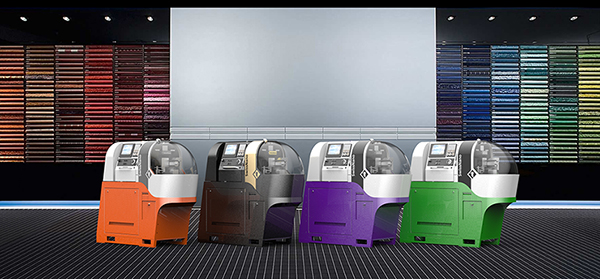


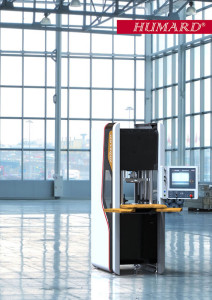
 Have you ever wanted to attach a file in an email and you can’t find or access it from your phone? The team behind the new email app Gusto has shared that frustration.
Have you ever wanted to attach a file in an email and you can’t find or access it from your phone? The team behind the new email app Gusto has shared that frustration.
 Hidden away in Building 17 of Facebook Inc.’s headquarters is a 170-person team that’s toiling away on products not usually associated with a social-networking company: hardware.
Hidden away in Building 17 of Facebook Inc.’s headquarters is a 170-person team that’s toiling away on products not usually associated with a social-networking company: hardware. You know what they say: It’s easier to keep a customer than it is to find a new one. It’s also far cheaper – 6 to 7 times less expensive, according to Flowtown. That’s why it’s essential for every business to have a strategy to boost loyalty and keep customers coming back for more.
You know what they say: It’s easier to keep a customer than it is to find a new one. It’s also far cheaper – 6 to 7 times less expensive, according to Flowtown. That’s why it’s essential for every business to have a strategy to boost loyalty and keep customers coming back for more. One of the first directives from Matias Duarte after he joined Google in 2010 was to commission research into how people around the world use the company’s phones.
One of the first directives from Matias Duarte after he joined Google in 2010 was to commission research into how people around the world use the company’s phones.